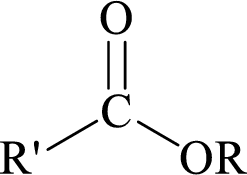
Interpretation: A mechanism has to be proposed for the given reaction.
Concept introduction:
Esters encompass a large family of organic compound with broad application in various fields of science and technology.
In Fischer esterification, a carboxylic acid is reacted with an alcohol in the presence of an acid catalyst, such as concentrated sulfuroc acid.
Esters can be simply represented as,

Fischer esterification can be represented as follows,

Mechanism of the reaction is the step-by-step description of the process by which reactants are changed into products.
Curved arrows show the bonds that are formed and the bonds that are broken in a reaction.
Curved arrows used to understand a reaction mechanism.
Electrophile: It is positively charged species which seeks for negative charge and hence accepts pair of electrons from negatively charged species (Nucleophiles) which results in the formation of
Nucleophile: It is negatively charged species which seeks for positive charge and hence donate pair of electrons to positively charged species (electrophiles) which results in the formation of chemical bond.
Acid chlorides are organic compound and they have functional group
Acid chlorides are most often prepared by treating a carboxylic acid with thionyl chloride.

Want to see the full answer?
Check out a sample textbook solution
Chapter 17 Solutions
Organic Chemistry
- 18-48 4-Aminobenzoic acid is prepared from benzoic acid by the following two steps. Show reagents and experimental conditions to bring about each step.arrow_forwardFollowing is a retrosynthetic analysis for the synthesis of the herbicide (S)-Metolachlor from 2-ethyl-6-methylaniline, chloroacetic acid, acetone, and methanol. Show reagents and experimental conditions for the synthesis of Metolachlor from these four organic starting materials. Your synthesis will most likely give a racemic mixture. The chiral catalyst used by Novartis for reduction in Step 2 gives 80% enantiomeric excess of the S enantiomer.arrow_forwardGrignard reagent is a versatile tool in synthetic organic chemistry. Using bromocyclopentane as a starting material, show how a Grignard reagent, X, is synthesized. Reaction of X with water produces compound Y while treatment in carbon dioxide followed by hydrolysis forms compound Z. 3-methyl-2butanone reacts with X and hydrolyses to yield compound AA. Draw the structural formulae of compounds Y, Z and AA and write the chemical equations respectively.arrow_forward
- Show how to convert the side-chain carboxyl group to a benzyl ester using benzyl chloride as a source of the benzyl group.arrow_forwardExplain this statement: Although 2-methoxyacetic acid (CH3OCH2COOH) is a stronger acid than acetic acid (CH3COOH), p-methoxybenzoic acid (CH3OC6H4COOH) is a weaker acid than benzoic acid (C6H5COOH).arrow_forwardExplain this statement: Although 2-methoxyacetic acid (CH3OCH2COOH)is a stronger acid than acetic acid (CH3COOH), p-methoxybenzoic acid(CH3OC6H4COOH) is a weaker acid than benzoic acid (C6H5COOH).arrow_forward
- Treatment of pentanedioic (glutaric) anhydride with ammonia at elevated temperature leads to a compound of molecular formula C5H7NO2. What is the structure of this product? [Hint: You need to think about the reactivity not only of acid anhydrides but also of amides and carboxylic acids]arrow_forwardA strong acid is generally used to catalyze the Fischer esterification of carboxylic acids.What two steps in the reaction are accelerated by the presence of strong acid? What function does the acid play in each of these steps?arrow_forwardBoth pentane-2,4-dione and ethyl acetoacetate have two carbonyl groups separated by a single carbon atom. Although an equilibrium mixture of pentane-2,4-dione tautomers contains 76% of the enol forms, an equilibrium mixture of ethyl acetoacetate tautomers contains only 8% of the enol forms. Suggest a reason for this difference.arrow_forward
 Organic ChemistryChemistryISBN:9781305580350Author:William H. Brown, Brent L. Iverson, Eric Anslyn, Christopher S. FootePublisher:Cengage Learning
Organic ChemistryChemistryISBN:9781305580350Author:William H. Brown, Brent L. Iverson, Eric Anslyn, Christopher S. FootePublisher:Cengage Learning
 Introduction to General, Organic and BiochemistryChemistryISBN:9781285869759Author:Frederick A. Bettelheim, William H. Brown, Mary K. Campbell, Shawn O. Farrell, Omar TorresPublisher:Cengage Learning
Introduction to General, Organic and BiochemistryChemistryISBN:9781285869759Author:Frederick A. Bettelheim, William H. Brown, Mary K. Campbell, Shawn O. Farrell, Omar TorresPublisher:Cengage Learning


